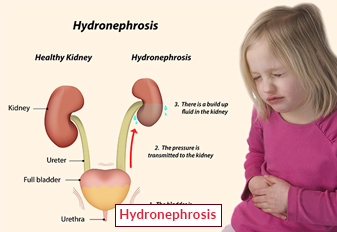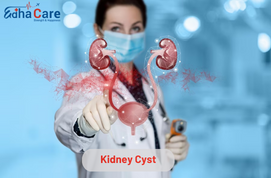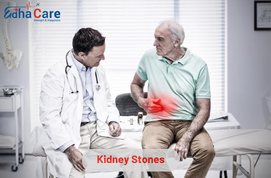Pyeloplasty Surgery

Pyeloplasty Surgery Urine (pee) cannot reach the bladder due to an obstruction, which is removed during this operation. The most frequent cause of pyeloplasty surgery procedure is the excision of a blockage in the ureter or urinary conduit. Additionally, an obstruction that keeps pee (urination) from entering the bladder is removed during this treatment. The most common reason for pyeloplasty is the removal of a blockage in the urinary conduit, or ureter. These blockages often occur exactly where urine leaves the kidneys and travels down the tubes toward the bladder, due to an aberration that occurred during the tube's formation. This area is known as a ureteropelvic junction, or UPJ for short.
Book an AppointmentAbout Pyeloplasty Surgery
Pyeloplasty Symptoms : Pyeloplasty is itself a kind of surgery used to treat symptoms caused by ureteropelvic junction (UPJ) obstruction rather than being associated with signs directly. On the other hand, signs of severe flank discomfort, recurring urinary tract infections ( blood in the urine (hematuria), and kidney enlargement (hydronephrosis) as a result of urine blockage in the UPJ may suggest that pyeloplasty is required. The obstruction or constriction of the UPJ causes a urine backup, which in turn causes pain and swelling in the kidneys.
Pyeloplasty Causes : Pyeloplasty is primarily caused by obstruction of the ureteropelvic junction (UPJ), which can happen due to a number of reasons. Common causes include congenital anomalies such as ureteropelvic junction constriction or pulling. Additional causes include kidney stones, scarring from previous surgeries, inflammation, and contraction of the ureter as a result of nearby structures. UPJ obstruction causes symptoms like kidney enlargement (hydronephrosis), flank discomfort, urinary tract infections, and blood in the urine by obstructing the normal passage of urine from the kidney to the bladder. Pyeloplasty surgery involves eliminating the obstruction and reconstructing the ureteropelvic junction to relieve those symptoms and restore normal urine drainage.
Pyeloplasty Remedies : The primary remedy to ureteropelvic junction (UPJ) blockage is pyeloplasty surgery. By reconstructing the urinary tract and removing an obstruction, the doctor is able successfully relieve symptoms that include kidney enlargement and excruciating flank discomfort.
Procedure of Pyeloplasty Surgery
The patient is put under general anesthesia for the pyeloplasty procedure. To reach the problematic area, the abdomen is created with small incisions. The ureteropelvic junction (UPJ) obstruction is located and removed by the surgeon, who also recreates the route, sealing the cuts, and oversees the patient's healing before release.
anesthetic: A patient receives a general anesthetic to ensure consciousness, provide pain relief during the surgery, and provide a secure and successful surgical result.
Incision: Using minimally invasive techniques like laparoscopy, that minimizes trauma, scarring, and time to recovery as compared to open surgery, the surgeon creates small cuts in the belly.
Identification: The ureteropelvic junction (UPJ) blockage or narrowing is properly located and removed by the doctor. To carefully target the afflicted location, sophisticated imaging procedures are frequently used.
Reconstruction: After the removal of the blockage, the surgeon recreates the upper part of the urinary tract. To restore proper urine flow, he or she may need to widen the opening, remove scarring, and create a fresh kidney-ureter connection.
Closure: To encourage appropriate healing and reduce the chance of complications like infection or bleeding, the incisions are carefully closed with surgical staples or sutures after the reconstruction is finished.
Monitoring: During the recovery area, a patient is continuously watched.
Rehabilitation: Within a few days, the patient is released and gradually gets back to their regular routines.
Require Assistance?
Get A Quick Callback From Our Healthcare Experts






